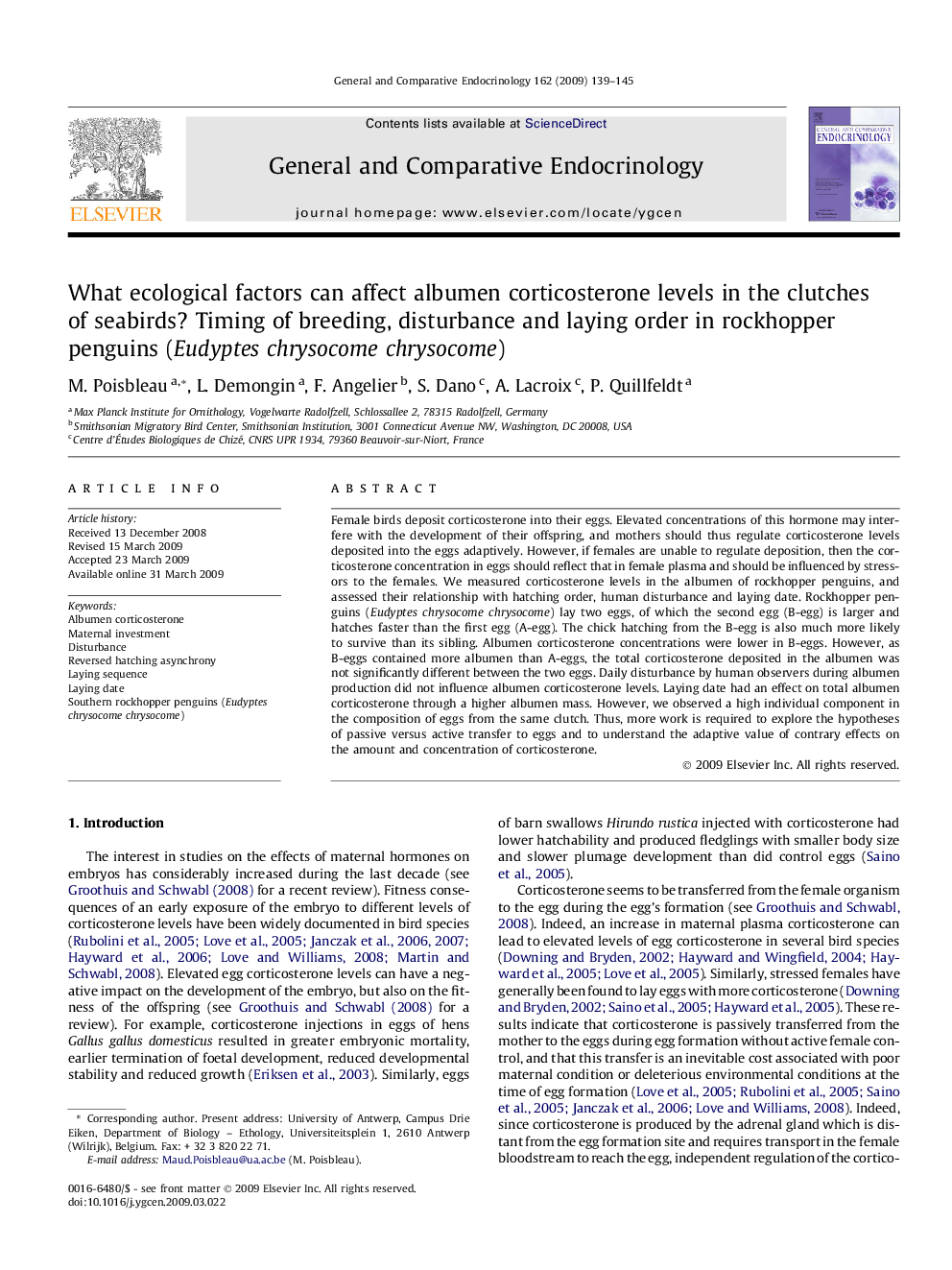| Article ID | Journal | Published Year | Pages | File Type |
|---|---|---|---|---|
| 5901735 | General and Comparative Endocrinology | 2009 | 7 Pages |
Abstract
Female birds deposit corticosterone into their eggs. Elevated concentrations of this hormone may interfere with the development of their offspring, and mothers should thus regulate corticosterone levels deposited into the eggs adaptively. However, if females are unable to regulate deposition, then the corticosterone concentration in eggs should reflect that in female plasma and should be influenced by stressors to the females. We measured corticosterone levels in the albumen of rockhopper penguins, and assessed their relationship with hatching order, human disturbance and laying date. Rockhopper penguins (Eudyptes chrysocome chrysocome) lay two eggs, of which the second egg (B-egg) is larger and hatches faster than the first egg (A-egg). The chick hatching from the B-egg is also much more likely to survive than its sibling. Albumen corticosterone concentrations were lower in B-eggs. However, as B-eggs contained more albumen than A-eggs, the total corticosterone deposited in the albumen was not significantly different between the two eggs. Daily disturbance by human observers during albumen production did not influence albumen corticosterone levels. Laying date had an effect on total albumen corticosterone through a higher albumen mass. However, we observed a high individual component in the composition of eggs from the same clutch. Thus, more work is required to explore the hypotheses of passive versus active transfer to eggs and to understand the adaptive value of contrary effects on the amount and concentration of corticosterone.
Related Topics
Life Sciences
Biochemistry, Genetics and Molecular Biology
Endocrinology
Authors
M. Poisbleau, L. Demongin, F. Angelier, S. Dano, A. Lacroix, P. Quillfeldt,
